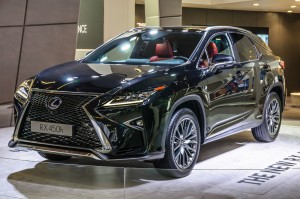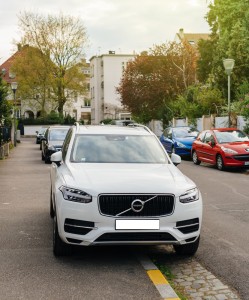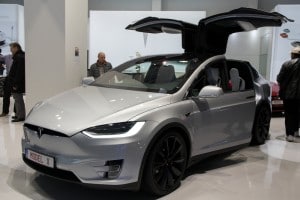
- By: admin
- 0 comment
Hybrid, plug-in Hybrid or All Electric SUV, which is the best option, a layman’s view
We have been driving a Lexus 450h hybrid electric SUV for the past four years. We are now looking to replace it with an at least partially electric SUV. Why an SUV? Well, carrying capacity is essential. Not only because our family likes to go camping occasionally, but the transportation of quite bulky samples is regularly required for my wife’s business. As it will be a company purchase, Vehicle Benefit Tax will also be important. With the environment in mind, we decided to look at three different options:
- A full hybrid – another Lexus RX 450h
- a plug-in hybrid – the Volvo XC90 T8
- an all-electric – the Tesla X
I am not a motoring journalist and make no claims in that direction. Neither am I going to go into great detail about colours & finishes, sound systems & security. I am simply reporting on the things that mattered to us and what we discovered during visits to the three dealerships to test drive an electric SUV.
The Full Hybrid
We like our current Lexus and decided to look at the latest model. It is very comfortable with lots of room and handles well for a car of its size. It is not the fastest of the three we looked at, but it is quick enough. From personal experience, it performs brilliantly in the snow. The automatic traction control just takes over, and on at least two occasions it has got us home when many others were not going anywhere. The latest model has the lane keeping, pre-crash alert and adaptive cruise control for improved safety. This appealed to us.
The Lexus claims 54 mpg, but to get that you would need to be a saint. We have achieved the high thirties and low forties on some trips. Mid to low thirties is more normal for us. The battery charges mainly from the engine, but also from regenerative braking, a system which recovers energy that would otherwise be wasted during braking.
The car starts off on the battery then between thirty and forty miles per hour the petrol engine takes over. When the petrol engine is running, it drives the generator to charge the battery. As conditions allow, such as in low-speed urban environments, the generator shuts down the petrol engine and the electric motor takes over. This allows the car to operate with zero emissions. The following link takes you to an explanation of the power package on the Lexus Web site
From an emissions perspective, the Lexus 450h produces 120g/km. This is no longer ultra-low emissions and the Vehicle Benefit Tax is 23%. In addition, it no longer qualifies for an Ultra-Low Emission Discount in the London Congestion Charge zone.
The Plug-in Hybrid
The Volvo is a nice chunky SUV and well specified. It drives well and like the Lexus it is more of a luxury car than a robust off-road vehicle. Also like the Lexus, you can have the lane keeping, pre-crash alert and adaptive cruise control. It is a big car, a 7-seater and has a lot of cargo capacity, 1816 litres, nearly double that of the Lexus at 924 litres.
At first sight it looks like a great option. Faster to 60 mph than the Lexus by couple of seconds and officially registers 134.5 mpg on the combined cycle. But, and it is a big but, the battery will only give you around 25 miles’ range. After that you will need to plug it in. Sure, it also has regenerative braking, but the battery cannot be charged by the engine. We got a bit of a shock when the salesman told us this. Also, the battery cuts out and the petrol engine takes over once you get above 50 mph.
Now all this means that if you do long distances on main roads or motorways, you will be running on the petrol engine. The 2-litre engine in this 2.5 tonne car means that you are only going to get mpg in the high twenties, substantially less than the Lexus and we have not even looked at the Tesla yet. If you spend all your time doing short distances in an urban environment and want to lug around six other people or a lot of stuff, this plug-in hybrid would be fine. Its official emissions are 49g/km and you would get the Ultra-Low Emission Discount in London. But apart from the “Chelsea Tractor” brigade, is a substantial electric SUV your ideal town car? Particularly as the car will need to switch to the petrol engine after 25 miles and the petrol only version of this car has emissions of 184g/km. This is noticeably greater than the 3.5 litre, Lexus at 120g/km.
The all Electric SUV
The Tesla X is the biggest of the three cars both in length and width. It has an amazing 2180 litres of cargo capacity, but this does include under floor storage. I must say it is an amazing car to drive. The model we tried could do 0 to 60 mph in 3.1 seconds, handles beautifully for such a big car and is very comfortable for driver and passengers. Tesla have some very skillful marketing people and designers. It has lots of little subtle and not so subtle tricks to seduce the buyer. My daughters were particularly taken with the free Spotify account! If you don’t know what Spotify is, click this link…
Your driving style will need to adjust to the way the Tesla operates, which is unique in my experience. The accelerator is incredibly sensitive a light touch and you are off. If your foot is too heavy when you start off, you will be slammed into your seat and the car is likely to end up a lot further down the road than you anticipated. Perhaps in someone’s garden.
Lifting your foot off the accelerator applies the regenerative braking system in an active manner. If you do this too quickly, you and your passengers get to test out how well the seat belts work. On an open road during the test drive, I did both of these things, one after the other. My wife will not let me forget it.
The Tesla X is a zero emissions vehicle. It claims 351 miles on the 100 kWh battery, although the reality from what I have heard is probably nearer to 310 miles. This is still good for an electric SUV. Tesla also has a range of Supercharger charging stations, where you can fully charge your car in about 30 minutes. But this is part of the problem with electric cars. First, in business time is money and sitting with a cup of coffee for 30 minutes whilst the car charges could be a drawback. On the other hand, when I go to Glasgow to see my father, the cost of the petrol to get me there will be about £70. In the Tesla, at a Supercharger it will be free.
The second issue is slightly more serious and that is the number of charging points. There are no Supercharger stations in or near Glasgow and there are none north of Edinburgh (there are charging points operated by ChargePlace Scotland). To mitigate this the Tesla Satellite Navigation system not only calculates the route but tells you where the super chargers are and how long you need to charge for. This is fine for Glasgow where the recharge gives me enough to get back to another Supercharger before I run out. If we were taking a Tesla to France this year we would arrive at our destination with about 4% left in the battery and only one slow public charger nearby. A little stressful. There are other charging points available in France but the Charente-Maritime is not well endowed with them. A full charge could take 8 to 10 hours, which may not be practical as others will be waiting. Zap-Map.com is a useful site for UK based charging points and they have a useful app for iOS and Google.
Thirdly, you will need to charge your car at home. There are home chargers which cost around £700 allowing you to charge the car overnight. If you are lucky enough to have 3 phase mains, this will charge fully in about 8 hours. If you just plug into the mains at someone else’s it will take up to 30 hours for a full charge.
Finally, the Tesla had a specific negative. There is no vanity mirror on either the driver’s or passenger’s sun visor! My wife’s comment? “This car was obviously designed by a man.”
Conclusions
If you want an electric SUV and wish to be even vaguely environmentally friendly, you need to look at either a Full Hybrid, a Plug-in Hybrid or a Full Electric. Currently each has benefits and disadvantages. So, which one to choose? As previously stated these are my opinions, and our family’s requirements. Personally, we will not be buying a plug-in hybrid. True the Vehicle Benefit Tax is only 9%, but we do not live in London and for the type of journeys we commonly take, it would not make sense. We make a lot of long journeys where the electric motors would not come into play. Under these conditions, the emissions would seem to be greater than the Lexus full hybrid electric SUV.
This leaves the Full Hybrid or the all-Electric. I loved the Tesla. Its acceleration matches a Ferrari. It has a lot of room, is great to drive, has zero CO2 emissions and is in the 9% Vehicle Benefit Tax band. However, the limited number of charging points and Supercharger charging stations in particular is a concern. Tesla have promised a tripling of their charging network by 2019, which will improve matters greatly. The price tag is also an issue at about £100,000. This is roughly 40% more than the Volvo or the Lexus, which both weigh in at around £60,000.
As for the Lexus, it is no longer considered an Ultra-Low Emissions vehicle. Its Vehicle Benefit Tax rate is 23%. I believe this to be unfair for it has lower emissions on longer and motorway journeys than a plug-in.
If you have the money, are of an adventurous nature and enjoy the thrill of not always knowing where your next charge is coming from, the all electric Tesla is for you. This situation will change over the next 18 months as most networks due to expand dramatically. Most of the existing networks hear and in Western Europe are planning massive expansions in this period. If you need the comfort of knowing there will always be a petrol station somewhere nearby, go for the Lexus. What will we do? I really don’t know at the moment.
Author; Glen Winkfield
Images supplied by depositphotos


